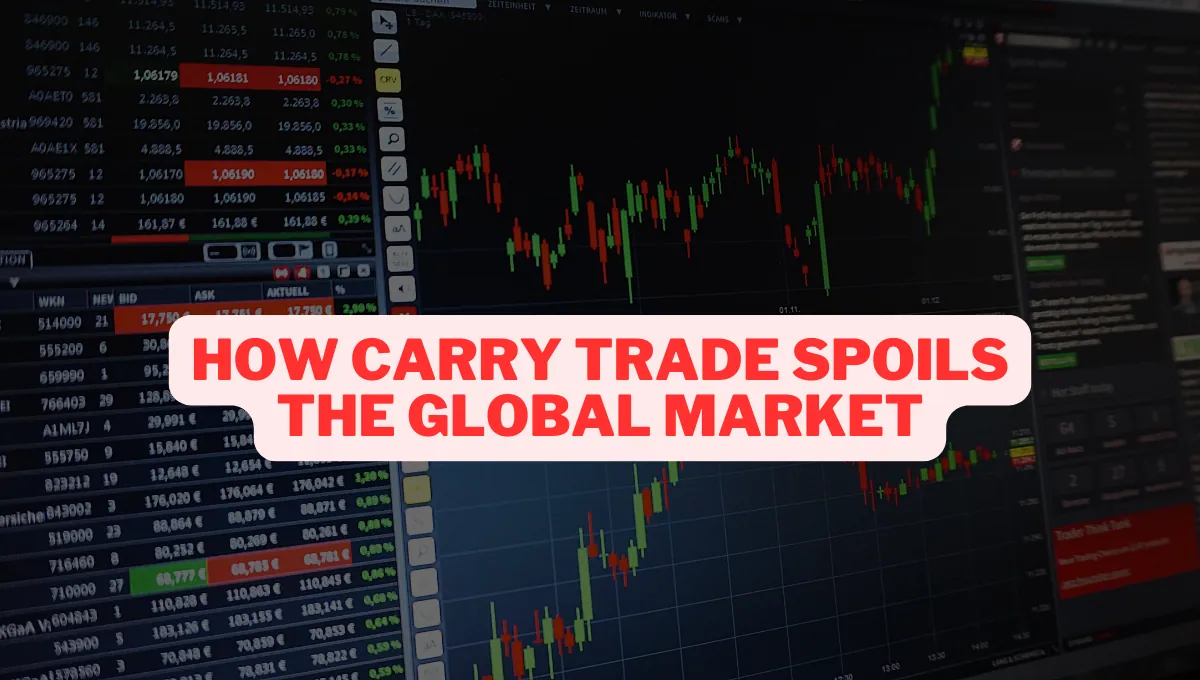Carry trade is an investment strategy that involves borrowing money at a low interest rate and investing it in assets that offer a higher return.
This approach is prevalent among investors seeking to capitalize on differences in interest rates between countries.
For instance, an investor might borrow funds from a country with low interest rates, such as Japan, and invest in a market with higher returns, like the United States.
The Mechanism of Carry Trade
Investors take advantage of favorable borrowing conditions in a typical carry trade scenario. They secure loans in countries with low interest rates and then convert the borrowed funds into currencies of countries where they can invest in higher-yielding assets.
The goal is to profit from the difference between the cost of borrowing and the returns on investments.
Impact on Global Stock Markets
The carry trade can have significant implications for global stock markets. When investors borrow from countries with low interest rates, like Japan, and invest in higher-return markets, such as the United States, it can lead to substantial capital inflows.
This influx of capital often boosts asset prices and market indices, creating a bullish environment.
However, this seemingly positive scenario can quickly turn negative if the conditions supporting the carry trade change.
For example, if the country where the borrowing occurs—such as Japan—raises its interest rates, it can lead to a series of consequences.
Japan’s Interest Rate Hike and Its Ripple Effects
Recently, Japan has been grappling with a weakening currency compared to the US dollar. To counteract this, the Japanese central bank decided to raise interest rates. The primary aim was to strengthen the yen by making it more attractive for investors and savers.
However, this increase in interest rates made borrowing in Japan more expensive. Consequently, investors engaged in the carry trade began to face higher costs.
As a result, they started withdrawing their investments from markets like the United States, where they had initially sought higher returns.
The Consequences of Withdrawal
The withdrawal of funds from the US market had immediate repercussions. As investors pulled their money out, asset prices began to fall.
This decline was not limited to the US market alone; it had a cascading effect on global markets. Given the interconnectedness of global economies, a downturn in one major market often leads to declines in others.
The situation worsened as investors rushed to liquidate their positions to avoid losses. This mass withdrawal led to a sell-off, exacerbating the market downturn. As asset prices dropped, investor confidence eroded, further fueling the market’s decline.
Potential for a Global Market Crash
The situation sparked concerns among financial experts. The sudden and widespread withdrawal of investments raised alarms about the stability of global financial markets.
Some analysts even warned that the ongoing market decline could escalate into a full-blown global market crash.
The fear of a market crash is not unfounded. The global economy is deeply interconnected, and significant shifts in one market can ripple through others.
A collapse in the US market, for example, could trigger a domino effect, causing declines in Europe, Asia, and other regions.
This potential for a synchronized global downturn is a serious concern for investors and policymakers alike.
The Role of Central Banks and Policymakers
Central banks and policymakers play a crucial role in managing such financial crises. Their actions can either mitigate or exacerbate the situation.
For instance, central banks can adjust interest rates, provide liquidity to markets, and intervene in currency markets to stabilize their economies.
In the case of Japan, the decision to raise interest rates was driven by the need to stabilize the yen. However, this move had unintended consequences on the global markets.
Policymakers in other countries must now navigate the delicate balance of managing their economic conditions while also considering the global implications of their actions.
Strategies for Investors During Market Turbulence
For investors, navigating the complexities of carry trade and its effects on global markets requires careful consideration and strategy.
Diversification is one key approach to managing risk. By spreading investments across different asset classes and regions, investors can reduce their exposure to any single market’s downturn.
Additionally, investors should stay informed about macroeconomic trends and central bank policies. Understanding the factors that drive interest rate changes and currency movements can help investors make more informed decisions.
Monitoring geopolitical developments and trade relationships is also crucial, as these can significantly impact global markets.
Conclusion
The carry trade, while offering profit opportunities, also poses significant risks to global markets. The recent scenario involving Japan’s interest rate hike and the subsequent withdrawal of investments from the US market highlights the potential for volatility and downturns.
As global markets remain interconnected, such events can have widespread implications, affecting economies worldwide.
Investors and policymakers must remain vigilant and adaptive to navigate these challenges and safeguard against the potential for a global market crash.
Watch the video below to learn more about the carry trade.
